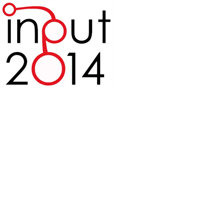Geodesign for Urban Ecosystem Services
Abstract
This paper argues about the use of Geodesign tools in planning for enhance the Ecosystem Services provision in a urban context. Recently evolved from GIScience, Geodesign is an emerging field dealing with 2D and 3D representation tools developed for environmental design. On the other hand, the ES concept has become a central issue in environmental planning and research, dealing with the services provided by ecosystems to sustain and fulfill human life and well being. However, both Geodesign and ES still lack of a real integration in planning practices. While Geodesign tools appear to be stuck in rendering realistic 3D urban environments, the use of the ES concept in planning processes is still largely missing. For these reasons this paper will take advantage of concepts and tools from Geodesign and Ecosystem Services disciplines and will explore how they can be integrated in a methodological framework to generate Geodesign solution aimed at increasing the provision of urban ecosystem services.Downloads
References
Brown, H., Vergrat, K., Green, K., Berchicicci, L. (2003), “Learning for sustainability transition through bounded social-technical experiments in personal mobility”, Technology Analysis and Strategic Management, 15, 291-315.
Bolund, P., Hunhammar S. (1999), “Ecosystem services in urban areas”, Ecological Economics, 29, 293-301.
Burkhard, B., Kroll, F., Müller, F., Windhorst, W. (2009), “Landscapes’ capacities to provide ecosystem services - a concept for land-cover based assessments, Landscape Online, 15, 1-22.
Daily, G. (1997), Nature's Services: Societal Dependence on Natural Ecosystems, Island Press, Washington.
de Groot, R.S., Alkemade, R., Braat, L, Hein, L., Willemen, L. (2010), “Challenges in integrating the concept of ecosystem services and values in landscape planning, management and decision making”, Ecological Complexity, 7, 260-272.
Fisher, B., Turner, K.R. (2008), “Ecosystem services: classification for valuation”, Biological Conservation, 141, 1167-1169.
Gómez-baggethun, E., Barton, D.N. (2013), “Classifying and valuing ecosystem services for urban planning”, Ecological Economics, 86, 235-245.
Goodchild, M.F. (2010), “Towards geodesign: Repurposing cartography and GIS?”, Cartographic Perspectives, 66, 7-21.
Lakes, T., Kim, H-O. (2012), “The urban environmental indicator “Biotope Area Ratio” - An enhanced approach to assess and manage the urban ecosystem services using high resolution remote-sensing, Ecological Indicators, 13, 93-103.
Martinico, F., La Rosa, D., Privitera, R. (2014), Green Oriented Urban Development for urban ecosystem services provision in a medium sized city in Southern Italy, in press, iForest, doi: 10.3832/ifor1171-007.
McElvaney, S. (2012), Geodesign for Regional and Urban Planning, Esri, Redlands.
Millennium Ecosystem Assessment (2005), Ecosystems and Human Wellbeing: Biodiversity Synthesis, DC: World Resources Institute, Washington.
Miller, W., (2013), Introducing Geodesign: The Concept, ESRI, Redlands.
Paavola, J., Hubacek K. (2013), “Ecosystem services, governance, and stakeholder participation: an introduction”, Ecology and Society, 18, 42.
Saaty, T.L. (1990), Multicriteria Decision Making: The Analytic Hierarchy Process, McGraw-Hill, New York.
Steinitz, C. (2008), “Landscape planning: A brief history of influential ideas”, Journal of Landscape Architecture, 5, 68-74.
Wilson, M.W. (2014), “On the criticality of mapping practices: Geodesign as critical GIS?”, Landscape and Urban Planning, in press, http://dx.doi.org/10.1016/j.landurbplan.2013.12.017.

Copyright (c) 2014 Tema. Journal of Land Use, Mobility and Environment

This work is licensed under a Creative Commons Attribution 4.0 International License.
Authors who publish in this journal agree to the following:
1. Authors retain the rights to their work and give in to the journal the right of first publication of the work simultaneously licensed under a Creative Commons License - Attribution that allows others to share the work indicating the authorship and the initial publication in this journal.
2. Authors can adhere to other agreements of non-exclusive license for the distribution of the published version of the work (ex. To deposit it in an institutional repository or to publish it in a monography), provided to indicate that the document was first published in this journal.
3. Authors can distribute their work online (ex. In institutional repositories or in their website) prior to and during the submission process, as it can lead to productive exchanges and it can increase the quotations of the published work (See The Effect of Open Access)
